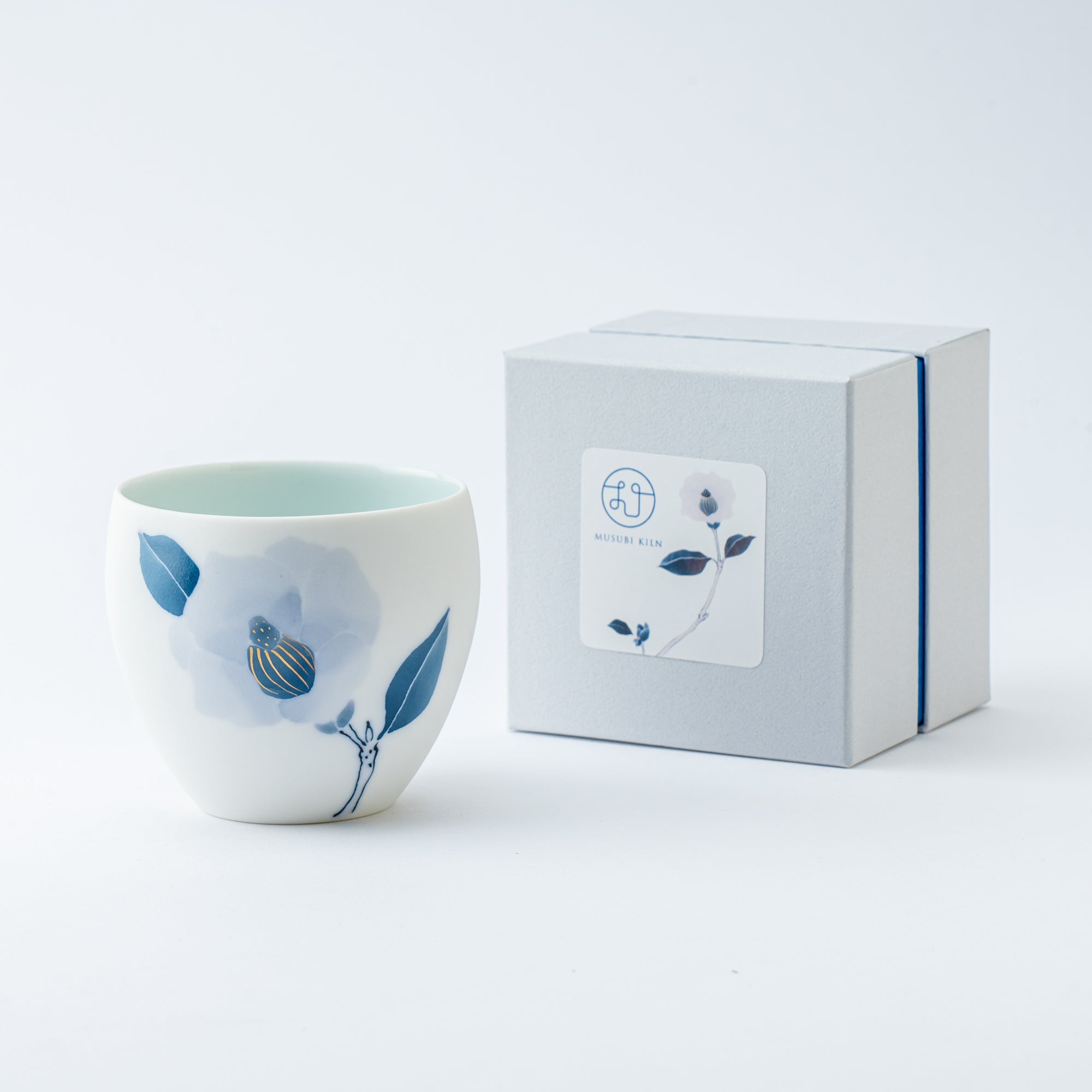
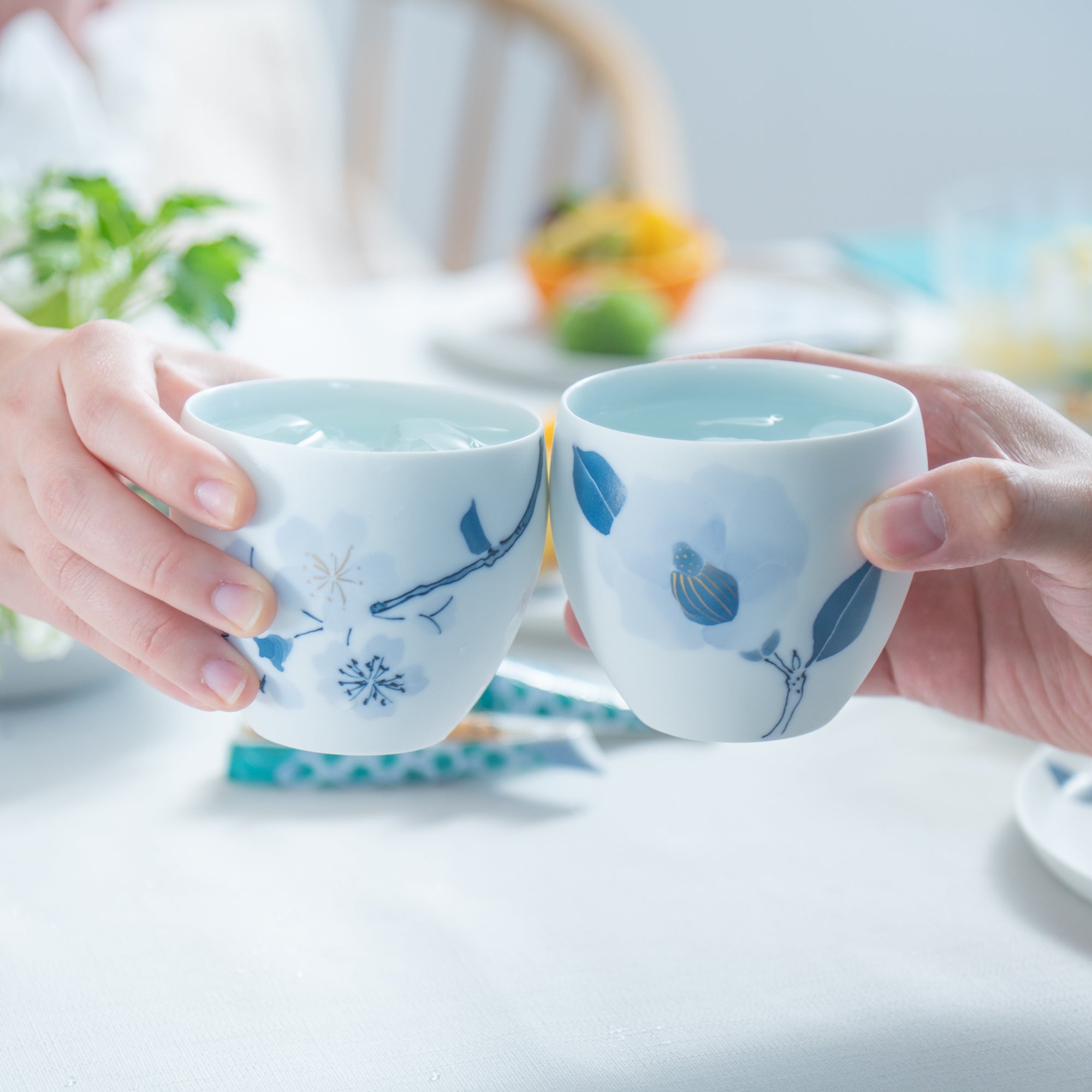
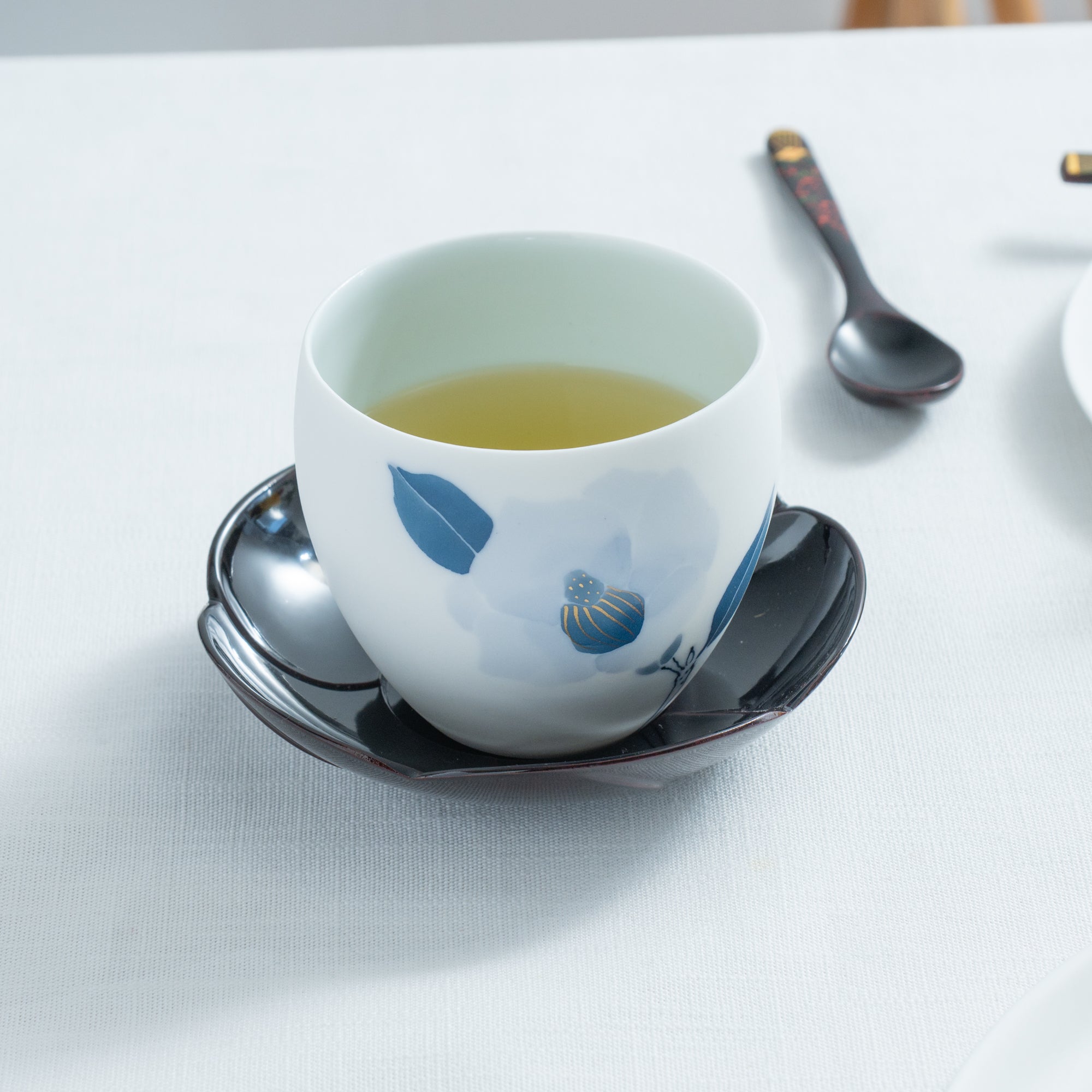
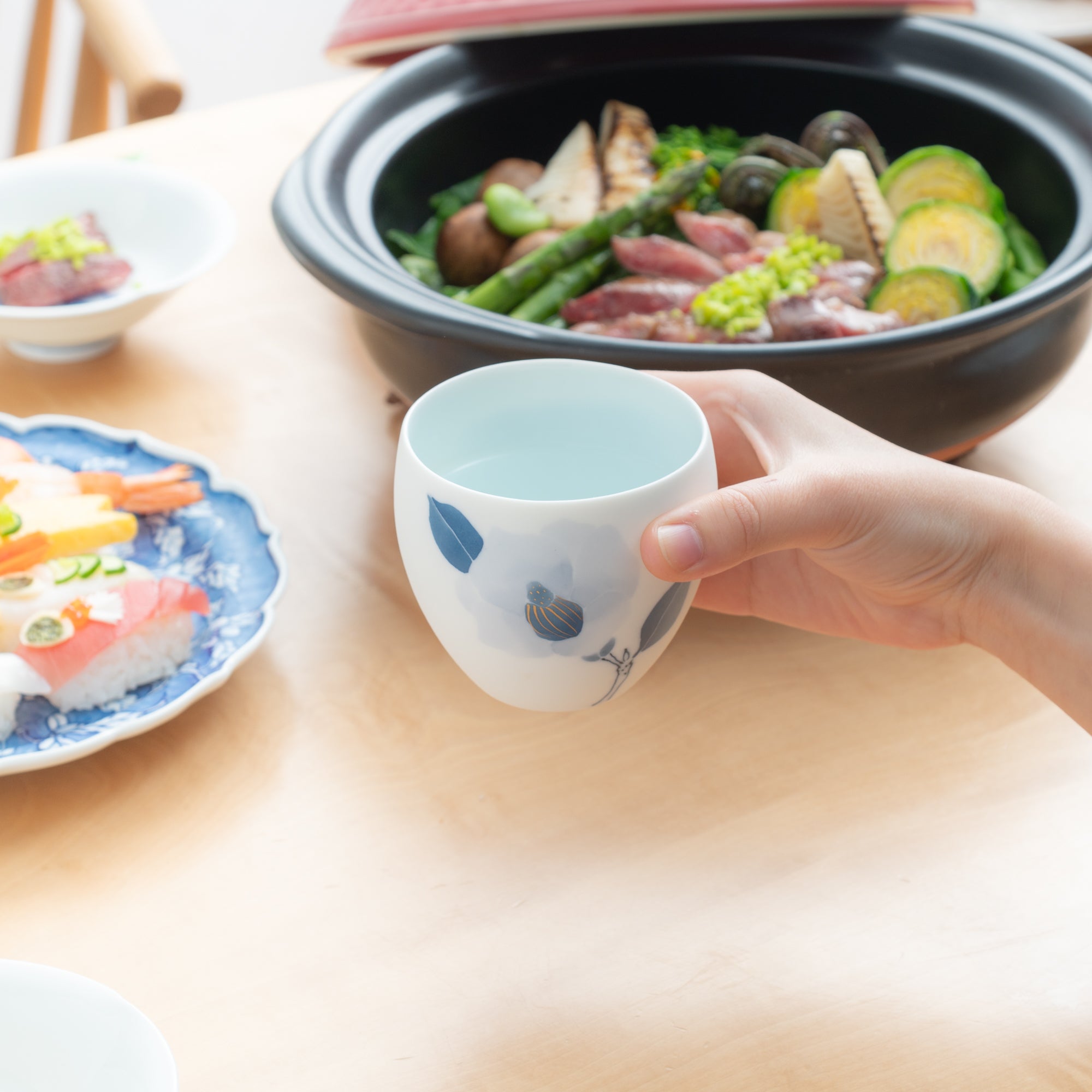
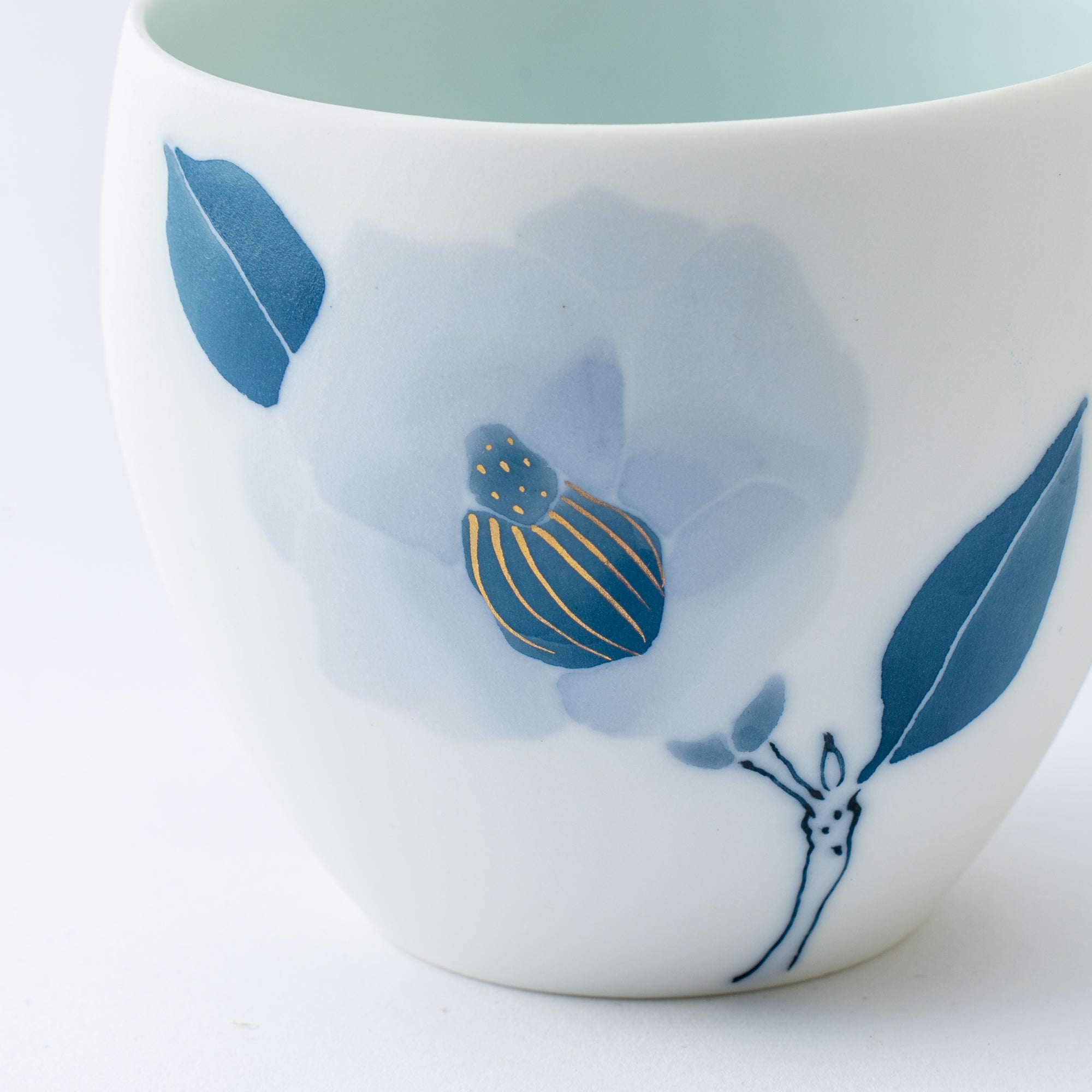
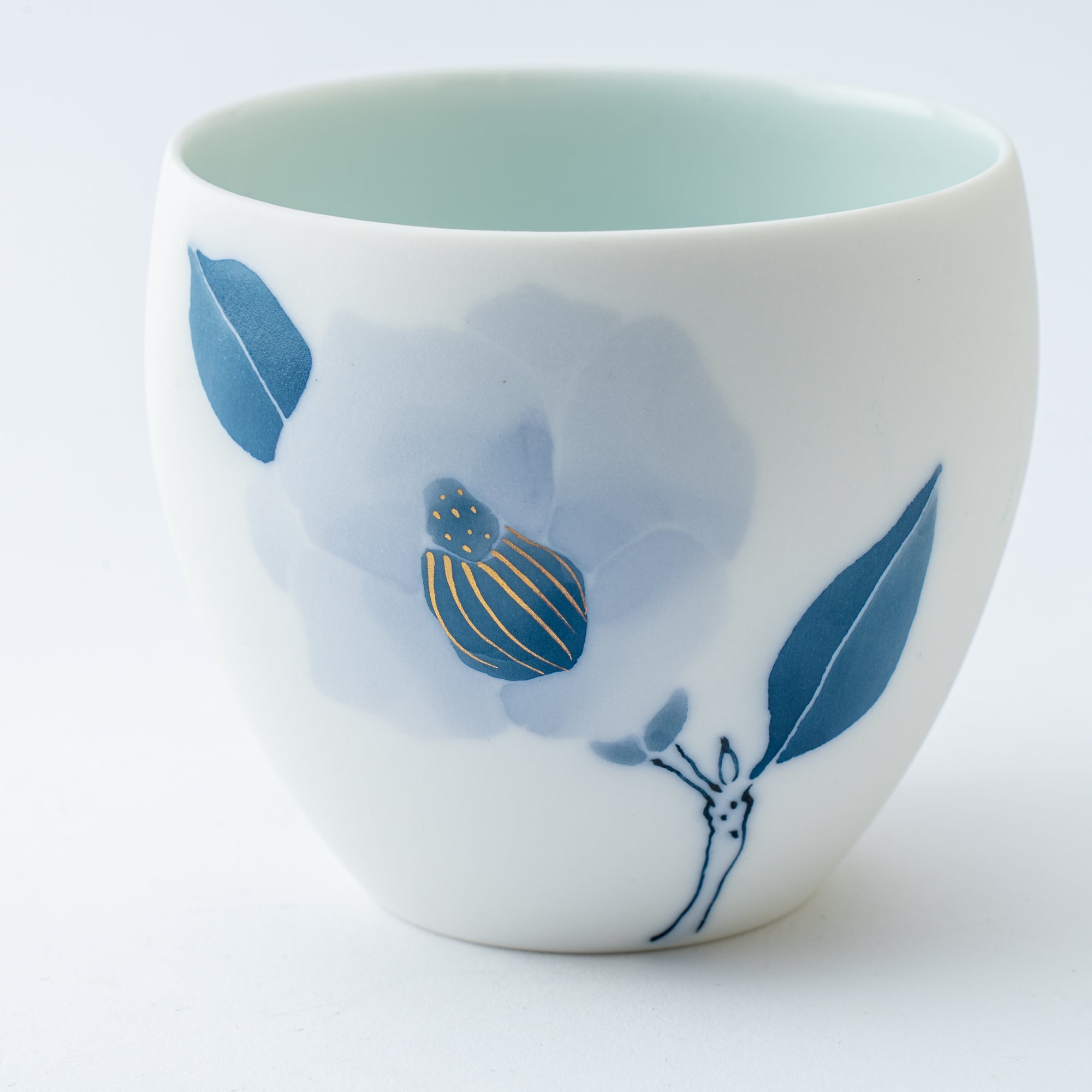
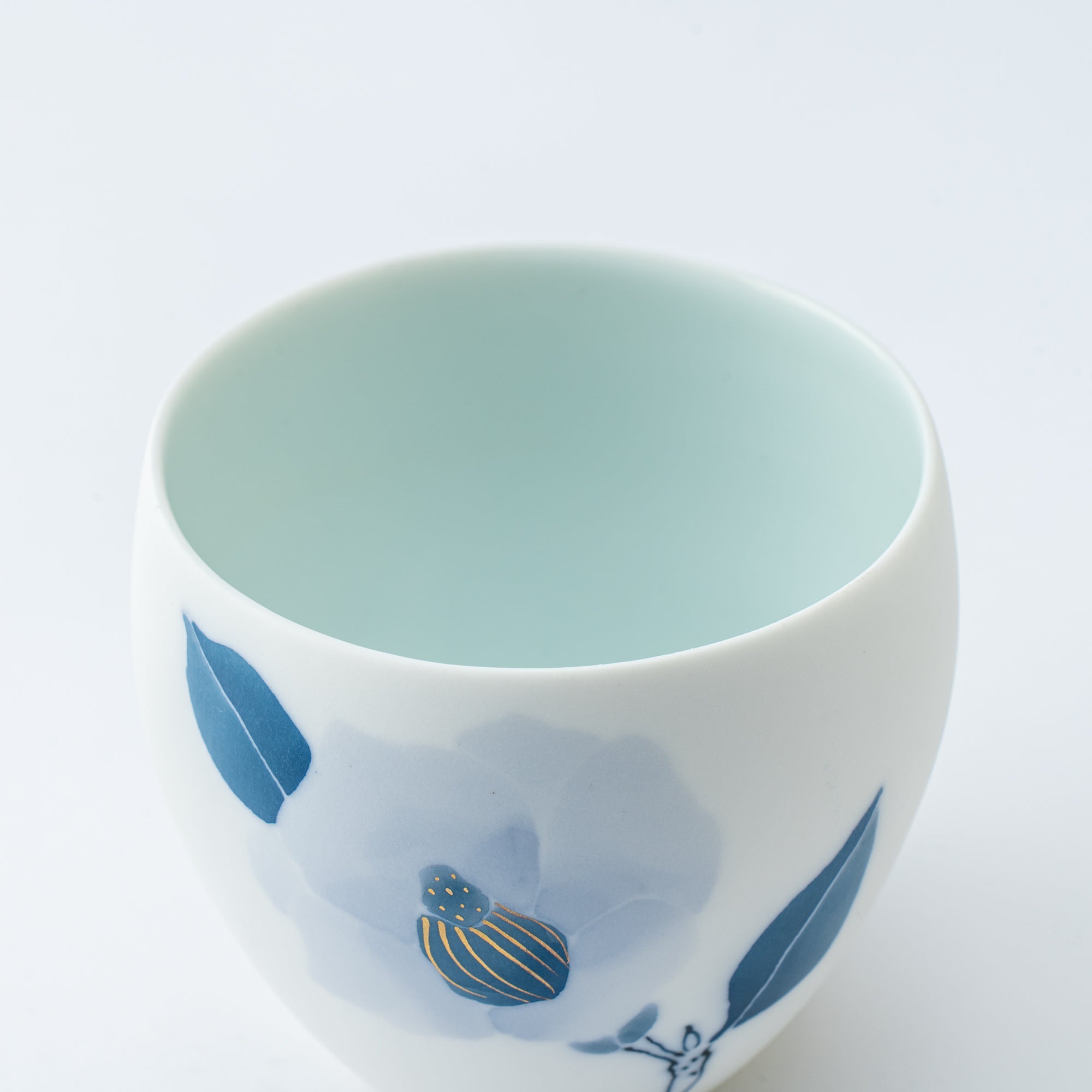
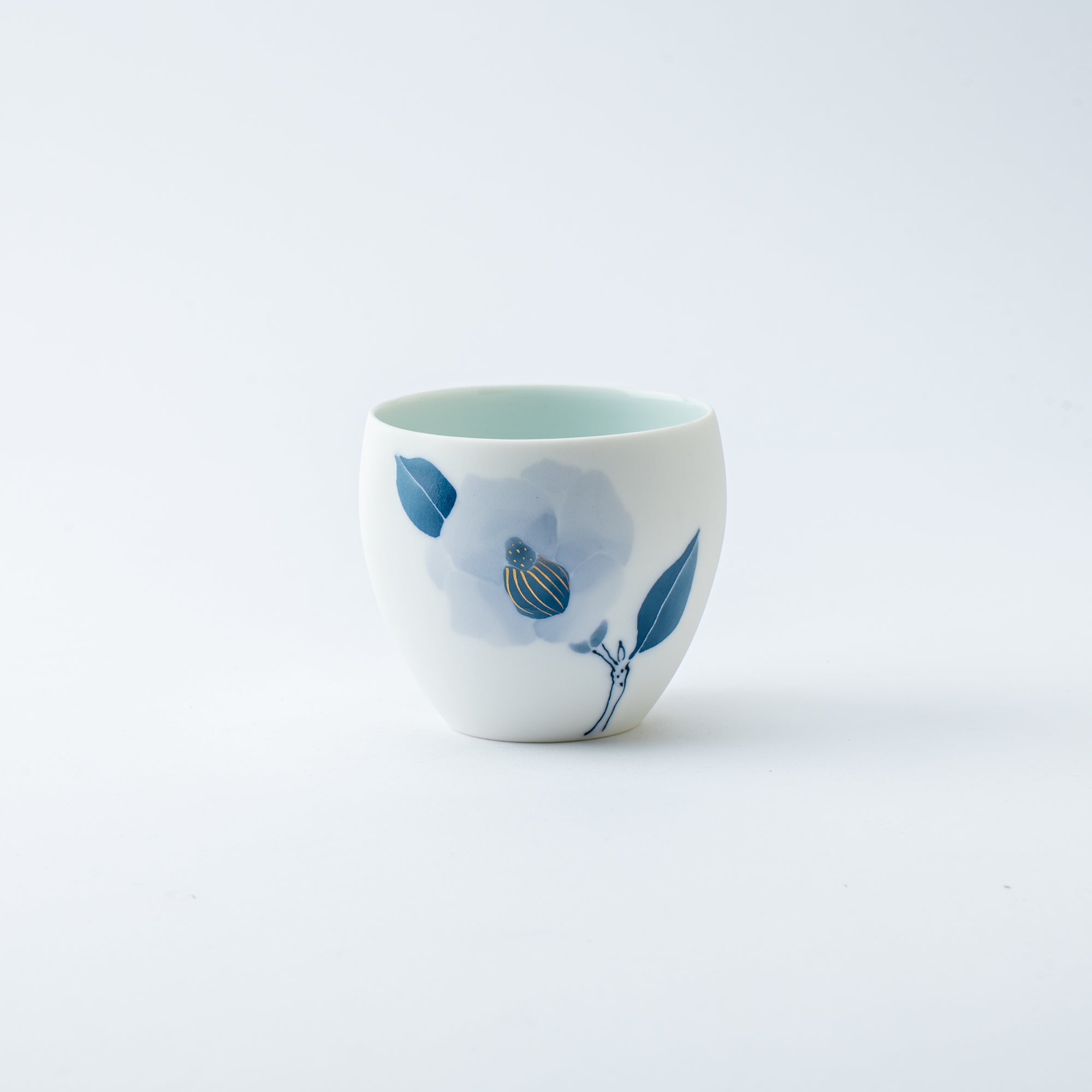
Blau Japanische Teetasse mit Kamelienblüte
Estimated Shipping Widget will be displayed here!
Eine blühende Kamelie bringt einen anmutigen Akzent auf Ihren Teetisch mit dieser japanischen Teetasse, verziert in Seto Sometsuke– der ikonische blau-weiße Stil. Die Blüte ist in geschichteten Blautönen mit sanft verschwommenen Blütenblättern gemalt, ein originelles Design für Musubi Kiln. In der Mitte setzt eine goldumrandete Knospe einen lebendigen Blickfang, während zwei tiefblaue Blätter dem Design Ausgewogenheit und Struktur verleihen.
Das Blumenmuster ist mit einem dicken Pinsel handgemalt. gosu, ein Kobaltpigment. Diese Technik ermöglicht subtile Farbabstufungen und fängt die sanfte Schichtung von Blütenblättern und Blättern ein. Die Innenseite ist mit einer glatten, glänzenden Glasur versehen, die einen Kontrast zur matten Außenseite bildet. Sie reflektiert die Wärme des grünen Tees im Inneren und zieht den Blick in die Tasse.
Verpackt in einer passenden Schachtel mit demselben Kamelienmotiv ist es eine schöne Wahl für ruhige Morgen, gemeinsamen Tee oder ein aufmerksames Geschenk.
EINZELHEITEN
| Quantity |
1 |
| Size | D 8.0 cm (3.1 in) x H 7.5 cm (3.0 in) |
| Capacity | 180 ml (6.1 fl oz) |
| Weight | 138 g (4.9 oz) |
| Material | Porcelain |
| Package Type | Paper box |
| Microwave | No |
| Dishwasher | No |
Hersteller / Marke
SINGAMA wurde 1919 gegründet und ist ein familiengeführtes Töpferstudio in Shinano, einer kleinen Stadt in den nordöstlichen Hügeln der Stadt Seto in der Präfektur Aichi. Das Studio verwendet hochwertigen lokalen Ton und ist spezialisiert auf Seto Sometsuke– weißes Porzellan mit sanften, indigoblauen Mustern. Jedes Stück ist handbemalt und strahlt mit seinen sanften Formen und der Wärme, die es auf dem alltäglichen Tisch ausstrahlt, Behaglichkeit aus.
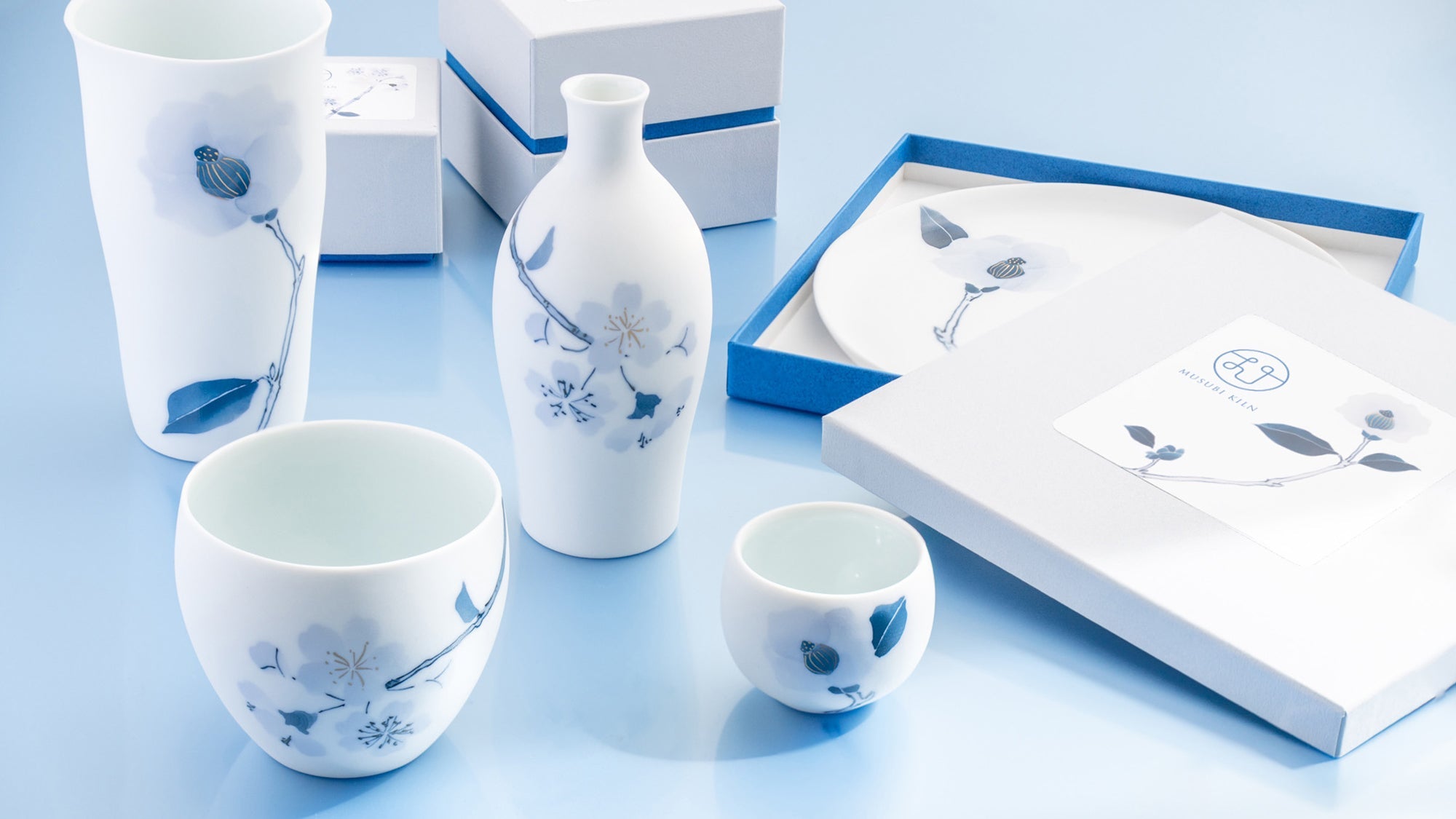
Kunsthandwerk
Seto-Ware wird in und um Seto City in der Präfektur Aichi hergestellt und umfasst eine breite Palette an Keramiken, die Jahrhunderte der Handwerkskunst und Innovation widerspiegeln. Als einer der sechs alten Brennöfen (Rokkoyo) Japans nimmt die Region Seto einen herausragenden Platz im keramischen Erbe des Landes ein. Sie war auch ein Pionier in der Massenproduktion von Porzellan, und ihre weite Verbreitung führte zum Wort setomono– ein Begriff, der auch heute noch allgemein für Keramik verwendet wird.
Seto ist eine der wenigen Regionen Japans, in der sowohl Steingut als auch Porzellan hergestellt werden und zeichnet sich durch eine bemerkenswerte stilistische Vielfalt aus. Von einfachem Alltagsgeschirr bis hin zu edleren Stücken prägt Seto-Keramik den Alltag mit Kreationen, die Tradition und Kreativität in Einklang bringen.
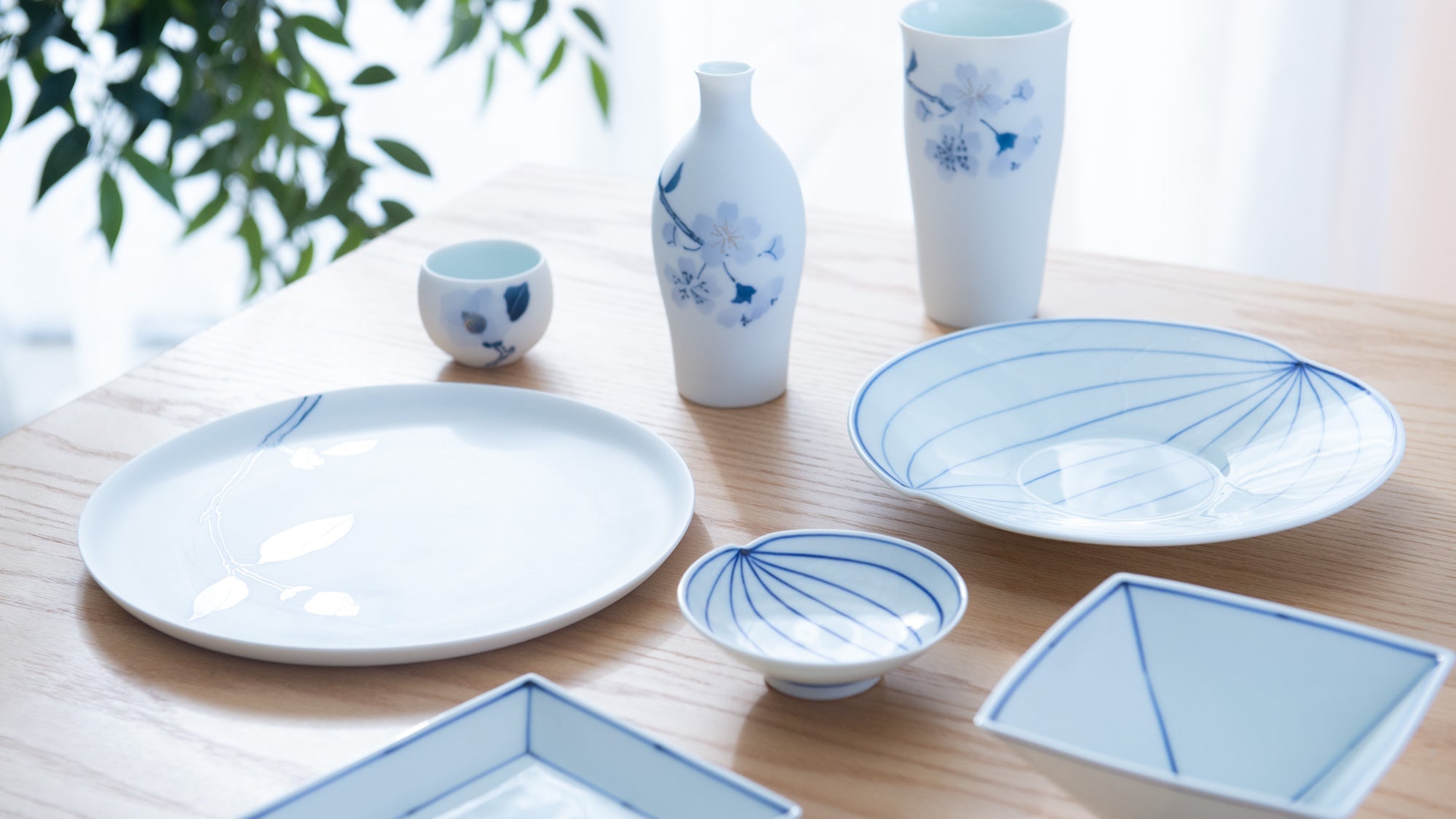
Anmerkungen
Optionen auswählen








Estimated Shipping Widget will be displayed here!
Japanische Teetassen
Wir haben sorgfältig eine Sammlung japanischer Teetassen aus ganz Japan zusammengestellt, um Ihre ruhige Teestunde zu verschönern. Diese Teetassen sind nicht nur optisch beeindruckend, sondern auch praktisch und somit perfekt für den täglichen Gebrauch.
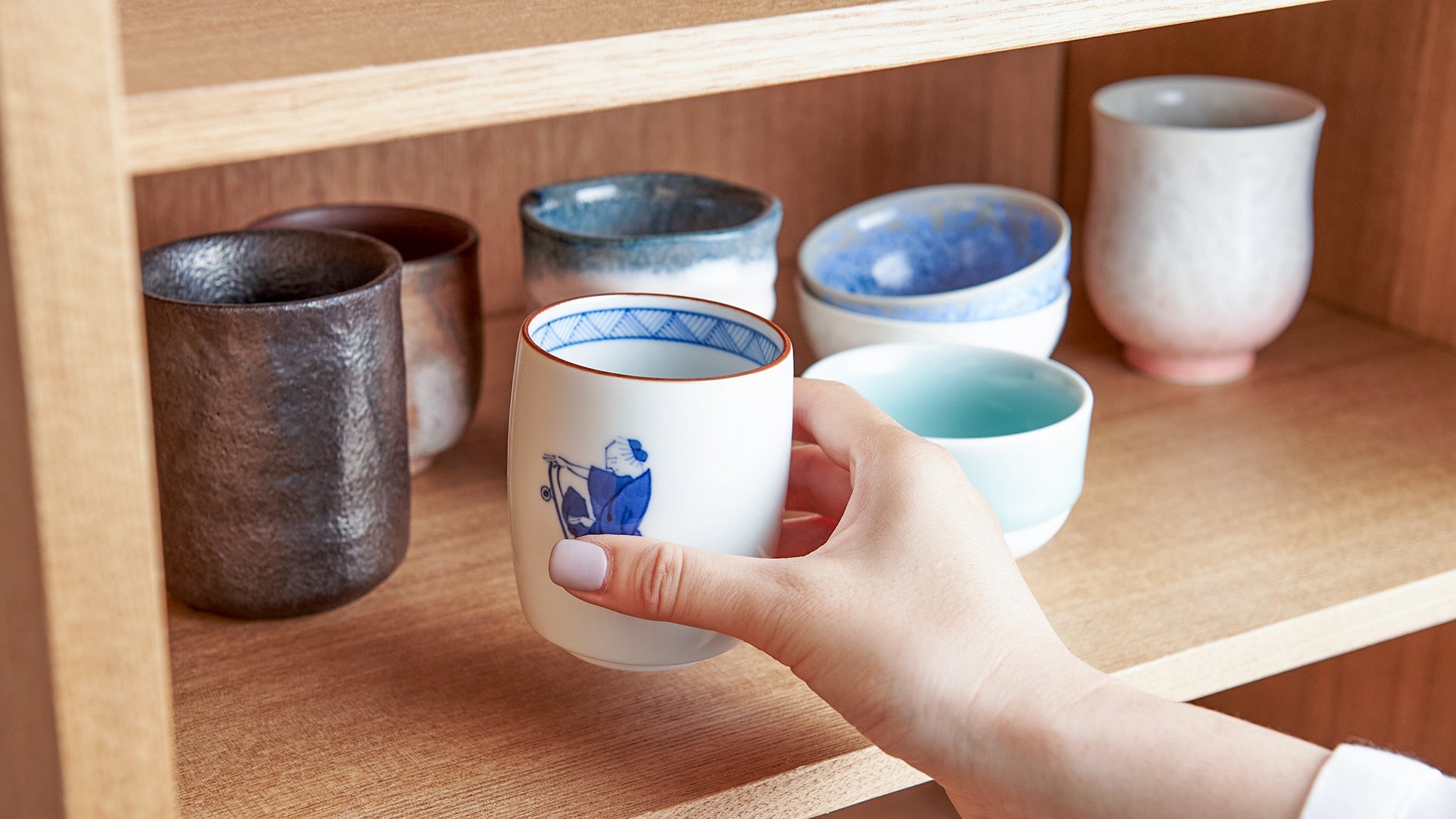
Kamelie
Die Kamelie, ein in Japan heimisches Glückssymbol, blüht vom Winter bis zum frühen Frühling in leuchtenden Farben. In Shinto-Ritualen verehrt und als heiliger Baum angesehen, ist sie aufgrund ihrer immergrünen Natur und ihrer Rolle bei der Begrüßung des Frühlings ein beliebtes Glückssymbol. Entdecken Sie den Charme der Kamelie mit unseren Motivartikeln, die dieses traditionelle japanische Symbol würdigen.


